Ouroboros: Ancient Infinity Symbol Used By Different Ancient Civilizations
A. Sutherland - AncientPages.com - Today, modern physicists try to unravel the mystery of time. Was there a beginning of time, and will there be an end of time?
The riddle of time has also fascinated our ancestors. Many ancient civilizations believed in the concept of infinity and had different ideas about how to explain its nature.

An ouroboros in a 1478 drawing in an alchemical tract. Anonymous medieval illuminator. Image credit: uploader Carlos adanero - Public Domain
The earliest recorded idea of infinity comes from Anaximander, a pre-Socratic Greek philosopher who lived in Miletus. He used the word apeiron, which means "end, limit".
Examination of ancient texts reveals that many people had one ancient symbol in common to express the thought of infinity – the Ouroboros.
Ouroboros is an ancient infinity symbol that has been used widely in many different cultures throughout history. The symbol is depicted as a snake eating its own tail. The term ouroboros is derived from two words in the ancient Greek language. The first word is “oura,” which means “the tail,” while the second word is “boros,” which means “eating.”
The first known appearance of the ouroboros motif is in the Enigmatic Book of the Netherworld, an ancient Egyptian funerary text in KV62, the tomb of Tutankhamun, in the 14th century BC.
When it was used around 1600 B.C. by the Egyptians for the first time in history, the Ouroboros was considered the symbol of the sun, and it was believed to have represented Aten’s travels (Aten is the sun disk in Egyptian mythology). Through the Egyptians, it was passed on to the Phoenician culture, and through their relations with Phoenicians, it was moved to the culture of Ancient Greek people, who named the infinity symbol in their language as it is used in the present day. Plato described the ouroboros as the first living thing; a self-eating, circular being. Plato considered the universe to be an immortal, mythologically constructed entity.
The origin of the ouroboros symbol is not entirely clear. The serpent may represent the cycle of life and death that the Universe maintains, or it may also symbolize the rebirth of the dead.
 First known representation of the ouroboros on one of the shrines enclosing the sarcophagus of Tutankhamun. Image credit: Djehouty - CC BY-SA 4.0
First known representation of the ouroboros on one of the shrines enclosing the sarcophagus of Tutankhamun. Image credit: Djehouty - CC BY-SA 4.0
Ancient alchemists used the Ouroboros symbol to represent the element mercury, which is known to run through any matter. In the Middle East, the god Mithra, who was believed to be reborn, was sometimes depicted with an Ouroboros around his waist or encircling his whole body.
In ancient India, the Ouroboros symbol was used to depict an animal halo, often in the form of a snake or lizard god or goddess. Shiva, who represents the duality of creation and destruction and thus the birth of life through opposites, is often represented within a circle. The circle is s symbol of the circular nature of the universe and time: death-rebirth, creation-destruction, love-hate, spring-winter; the eternal dance of the cosmos.
In ancient China, the Universe was believed to be created by the union of the two opposites, the Earth and the Heaven. As two powerful realms, the Earth and the Heaven united to deliver the creation of the universe
In Norse mythology, the Ouroboros appears as the serpent Jörmungandr, one of the three children of Loki and Angrboda, which grew so large that it could encircle the world and grasp its tail in its teeth. In the North American culture, the infinity symbol was seen in some carvings in the ruins left behind by the Aztecs. Quetzalcoatl, “the feathered serpent God” of the ancient North American culture, was sometimes depicted as a serpent devouring its own tail.
The infinity symbol Ouroboros is encountered in almost every ancient culture. The Milky Way galaxy has been suggested as the source of inspiration for the symbol. In mythology, the myths regarding the infinity symbol tell us that a serpent of light lives in Heaven.
In these myths, the Milky Way galaxy, shaped like a circle, was considered this serpent. Time has always fascinated humans, and cosmologists have long sought to discover whether infinity exists in our physical universe.
Updated on March 7, 2024
The first version of this article was originally published on March 20, 2016
Written by – A. Sutherland AncientPages.com Senior Staff Writer
Copyright © AncientPages.com All rights reserved. This material may not be published, broadcast, rewritten or redistributed in whole or part without the express written permission of AncientPages.com
More From Ancient Pages
-
 God Loki – Trickster, Elusive And Fascinating Member Of The Norse Pantheon
Featured Stories | Sep 14, 2017
God Loki – Trickster, Elusive And Fascinating Member Of The Norse Pantheon
Featured Stories | Sep 14, 2017 -
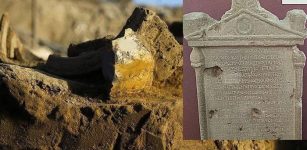 Lost Laodicea Temple And Seleucid Relics – Archaeological Search Continues
Archaeology | Jun 29, 2020
Lost Laodicea Temple And Seleucid Relics – Archaeological Search Continues
Archaeology | Jun 29, 2020 -
 On This Day In History: Soviet Spacecraft Venera 7 Launched: First To Send Data From Venus To Earth – On Aug 17, 1970
News | Aug 17, 2016
On This Day In History: Soviet Spacecraft Venera 7 Launched: First To Send Data From Venus To Earth – On Aug 17, 1970
News | Aug 17, 2016 -
 2,250-Year-Old Iron Age Settlement Discovered Near Upton-Upon-Severn
Archaeology | Jan 4, 2022
2,250-Year-Old Iron Age Settlement Discovered Near Upton-Upon-Severn
Archaeology | Jan 4, 2022 -
 Meet The First Neanderthal Family And Community
Archaeology | Oct 19, 2022
Meet The First Neanderthal Family And Community
Archaeology | Oct 19, 2022 -
 Intriguing Genetics: First Ancient Irish Human Genomes – Sequenced
Archaeology | Dec 29, 2015
Intriguing Genetics: First Ancient Irish Human Genomes – Sequenced
Archaeology | Dec 29, 2015 -
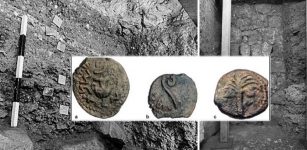 New Discovery: 2,000-Year-Old Monumental Street In Jerusalem Built By Pontius Pilate
Archaeology | Oct 21, 2019
New Discovery: 2,000-Year-Old Monumental Street In Jerusalem Built By Pontius Pilate
Archaeology | Oct 21, 2019 -
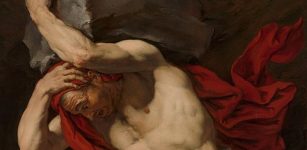 Why Did God Zeus Give King Sisyphus An Eternal Punishment?
Featured Stories | Sep 2, 2019
Why Did God Zeus Give King Sisyphus An Eternal Punishment?
Featured Stories | Sep 2, 2019 -
 Being Left-Handed Was A Sign Of Evil Until Only Recently
Ancient History Facts | Jun 29, 2018
Being Left-Handed Was A Sign Of Evil Until Only Recently
Ancient History Facts | Jun 29, 2018 -
 Does A Baffling Artifact Offer Evidence Of Ancient Extraterrestrial Visitation In New Zealand? – Experts Investigate – Part 2
Featured Stories | Jul 23, 2020
Does A Baffling Artifact Offer Evidence Of Ancient Extraterrestrial Visitation In New Zealand? – Experts Investigate – Part 2
Featured Stories | Jul 23, 2020 -
 Rhetorica ad Herennium: Ancient Book That Improves Your Memory Using Method Of Loci – You Can Test It Easily
Featured Stories | Feb 21, 2025
Rhetorica ad Herennium: Ancient Book That Improves Your Memory Using Method Of Loci – You Can Test It Easily
Featured Stories | Feb 21, 2025 -
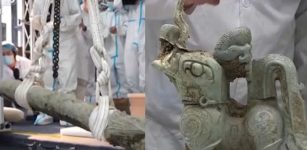 Statue Of Unknown Mythical Beast With Four Wings Discovered
Archaeology | Sep 1, 2022
Statue Of Unknown Mythical Beast With Four Wings Discovered
Archaeology | Sep 1, 2022 -
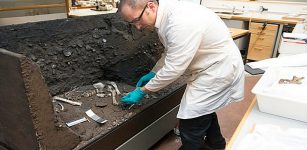 8200-Year-Old ‘Viste Individual’ – DNA Analysis May Shed Light On Early Migration To Norway
Archaeology | Dec 6, 2015
8200-Year-Old ‘Viste Individual’ – DNA Analysis May Shed Light On Early Migration To Norway
Archaeology | Dec 6, 2015 -
 Skeleton Of Last Trojan Discovered – Ancient City Of Troy May Have Been A Religious Sanctuary – Archaeologists Say
Archaeology | Sep 21, 2018
Skeleton Of Last Trojan Discovered – Ancient City Of Troy May Have Been A Religious Sanctuary – Archaeologists Say
Archaeology | Sep 21, 2018 -
 Early Homo Sapiens From Southeast Asia Could Adapt To A Rainforest Environment
Archaeology | Oct 17, 2021
Early Homo Sapiens From Southeast Asia Could Adapt To A Rainforest Environment
Archaeology | Oct 17, 2021 -
 Gothic Warrior With Rare Sword Unearthed In Thessaloniki, Greece
Archaeology | Apr 23, 2021
Gothic Warrior With Rare Sword Unearthed In Thessaloniki, Greece
Archaeology | Apr 23, 2021 -
 On This Day In History: The Battle of Mortimer’s Cross – On Feb 2, 1461
News | Feb 2, 2017
On This Day In History: The Battle of Mortimer’s Cross – On Feb 2, 1461
News | Feb 2, 2017 -
 Pax Romana: 200-Year-Long Period Of Stability Within The Roman Empire
Ancient History Facts | Apr 19, 2016
Pax Romana: 200-Year-Long Period Of Stability Within The Roman Empire
Ancient History Facts | Apr 19, 2016 -
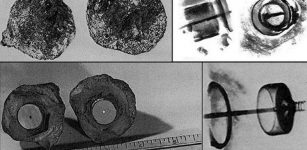 Mystery Of The Coso Artifact: A Spark Plug Or A Genuine Example Of Advanced Antediluvian Technology?
Ancient Technology | Sep 9, 2014
Mystery Of The Coso Artifact: A Spark Plug Or A Genuine Example Of Advanced Antediluvian Technology?
Ancient Technology | Sep 9, 2014 -
 New Moai Statue Found On Easter Island
Archaeology | Feb 28, 2023
New Moai Statue Found On Easter Island
Archaeology | Feb 28, 2023
